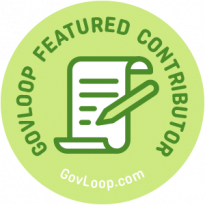In 2020, Congress designated the new 988 dialing code for operation through the existing National Suicide Prevention Lifeline. The Department of Health and Human Services (HHS) Substance Abuse and Mental Health Services Administration (SAMHSA) sees 988 as a first step towards a transformed crisis care system in America. In 2020, the United States had one death by suicide every 11 minutes, and is the leading cause of death for people aged 10 to 34 years old.

Let’s be clear: This is a complicated issue with disparate causes and effects, treatments and outcomes, and more variables than most of us realize. While answering a call to a suicide and crisis hotline represents the essential first-step tactical action, the continuum of care and support for those at risk of suicide is vast and complex. Rolling out a new, national 3-digit contact center isn’t a magic wand, but it provides an easy access point for those in need and can — and will — make a profound difference.
Over the last two administrations, customer experience (CX) has emerged as a leading policy objective in the Federal Government to build trust, drive efficiency, and better serve the public. President Biden’s Executive Order on Transforming Federal Experience and Service Delivery to Rebuild Trust in Government doubles down on those efforts.
In the public sector, we see strong, effective CX efforts that have produced solid lessons learned. More specifically to SAMHSA, the upgrade to an easy-to-use interface for their Mental Health Data Archive, gets valuable mental health and substance abuse data into the hands of citizens who desperately need this information. When my older sons were heading off to college, I could check things like opioid overdose rates and mental health services available in their Southwestern Virginia towns.
Admittedly, it feels a little awkward to use the term “customer” in this context. The Trevor Project, the world’s largest suicide prevention and crisis intervention organization for LGBTQ young people, uses the term “help seekers,” and that feels like a more appropriate term. But for the purposes of the 988 Initiative, there are several very different customer audiences. A customer may be someone in crisis, or the loved one of someone in crisis, or a mental health provider. And while it feels uncomfortable to use the term “customer,” the public sector CX lessons hold, and should be implemented in program design.
In my personal experience, there has been little intentional design in the continuum of care for mental health services. Those in need of advocacy as they battle a mental health crisis are frequently tasked with making all the pieces of the puzzle fit along the continuum of care for themselves.
When one of my family members had suicidal ideation, his physician directed us to the nearest ER. There, once he was determined to be stable, the patient waited 17 hours to be evaluated for risk of immediate harm to self or others. This was pre-COVID, yet after waiting all that time, the evaluation was held by video conference. After being cleared, this patient, struggling from depression and anxiety, was left to find a local counselor who was taking new patients, verify insurance coverage, and get a referral for a psychiatrist to begin the long try-and-see journey of finding a medication that worked. It felt like no one was truly there for him in a time of need.
To the overwhelmed, sad, anxious, and often alone, this continuum of care sees many patients fall through the cracks. By taking a CX-focused approach to transforming crisis care services in the United States, we have an opportunity to connect those dots with a combination of data, technology, and behavioral health expertise that weaves together a smooth experience where data is shared and analyzed, hand-offs from urgent care to community care are complete, and no one slips through the cracks.
Lesson 1: User Research
Systems that don’t begin with the user in mind will never be optimal. To maximize effectiveness, SAMHSA must leverage existing data sets on users, but also conduct significant user research. The research is essential given the post-COVID and digital modernization changes of the last several years. If we replicate only what’s worked in the past, we will fail. Who is accessing current resources and how? And for those that are not, why? Where do they find professional support? What are the indicators of trust? How do those living in underserved communities interact with public and private systems throughout the continuum of care?
Lesson 2: Build Personas
From our user research, we begin to build personas and journey maps based on the foundations of human centered design. And above all, these personas must be inclusive of a wide range of demographic factors. The goal here is to leverage decades of data and program evaluation to create new systems that apply technology and behavioral health expertise to reduce the rate of suicide in our country. To be successful, SAMHSA must understand where different user groups access types of care and the barriers they face, and take bold steps to knock down those barriers.
Lesson 3: Supporting Diverse Workforce Development
If these diverse personas are not supported by behavioral health, crisis support, and call center staff in every corner of the country who have similar or shared lived experiences, 988 will not achieve its full potential. The recruitment and retention of behavioral health, crisis counselors, and outreach staff must be diverse on a range of factors to support the range of diversity in the populations they are serving.
Jennifer Folsom is a dynamic, high-energy leader with a proven record of growing all sizes of professional services firms while growing a family. She is the Vice President of Growth at ICF, a Washington, DC- based global management consulting firm. A human capital expert, she leverages a people-centered approach to drive revenue in organizations from start-up to Big 4. Jennifer loves her work but knows that living your whole best life is the ultimate key to success.





Leave a Reply
You must be logged in to post a comment.